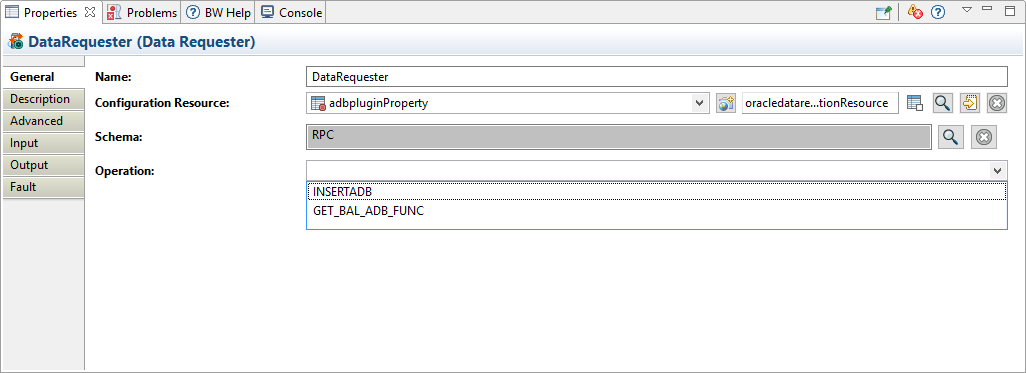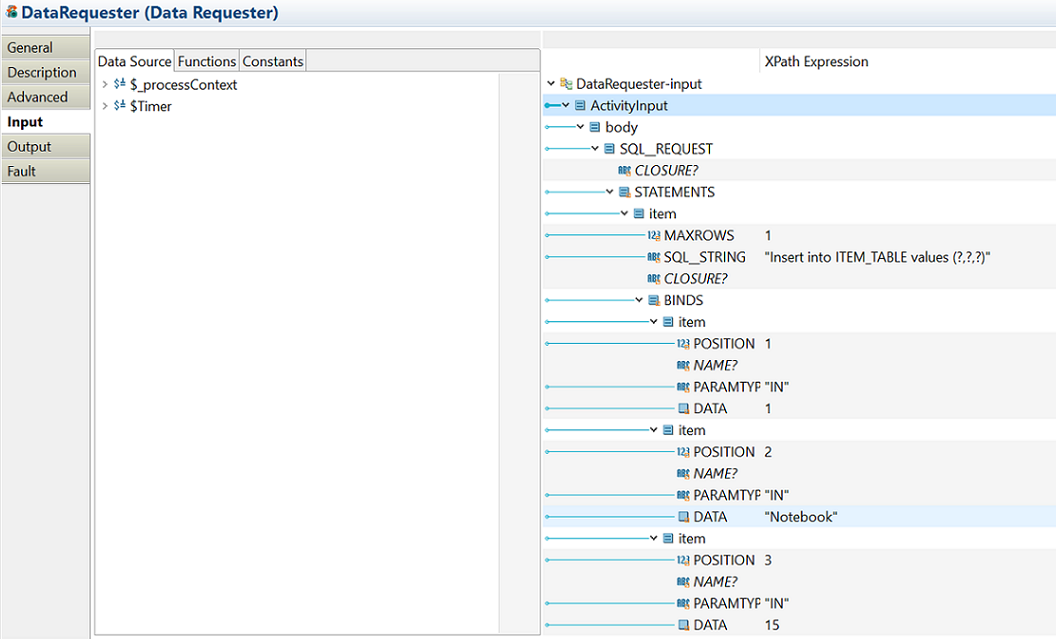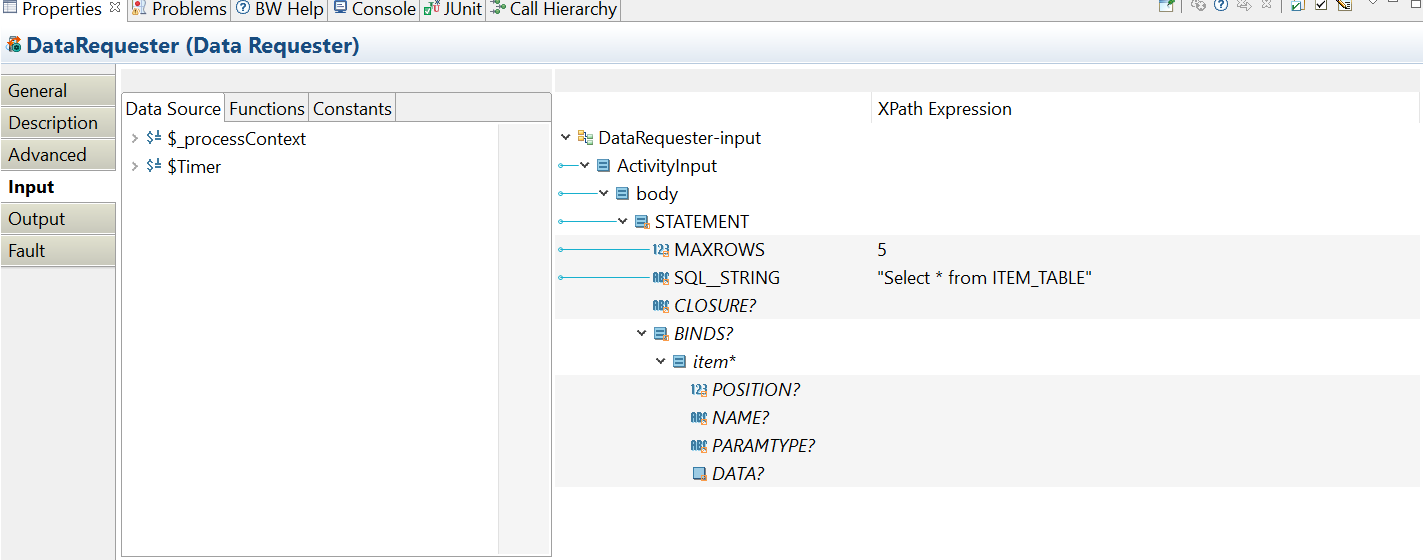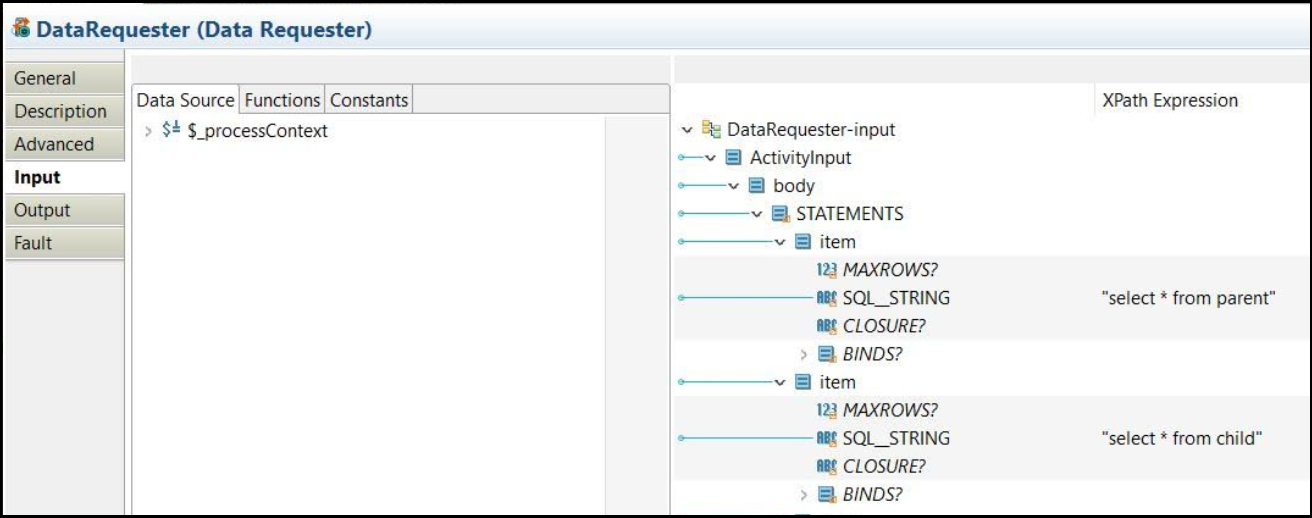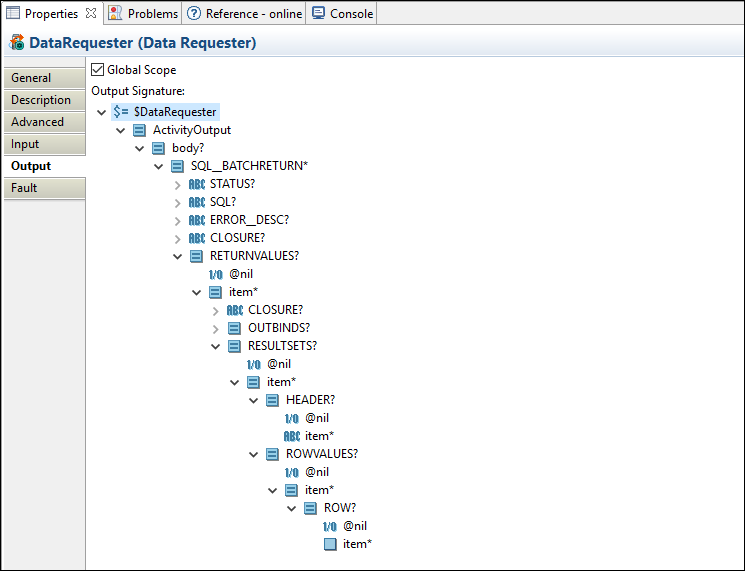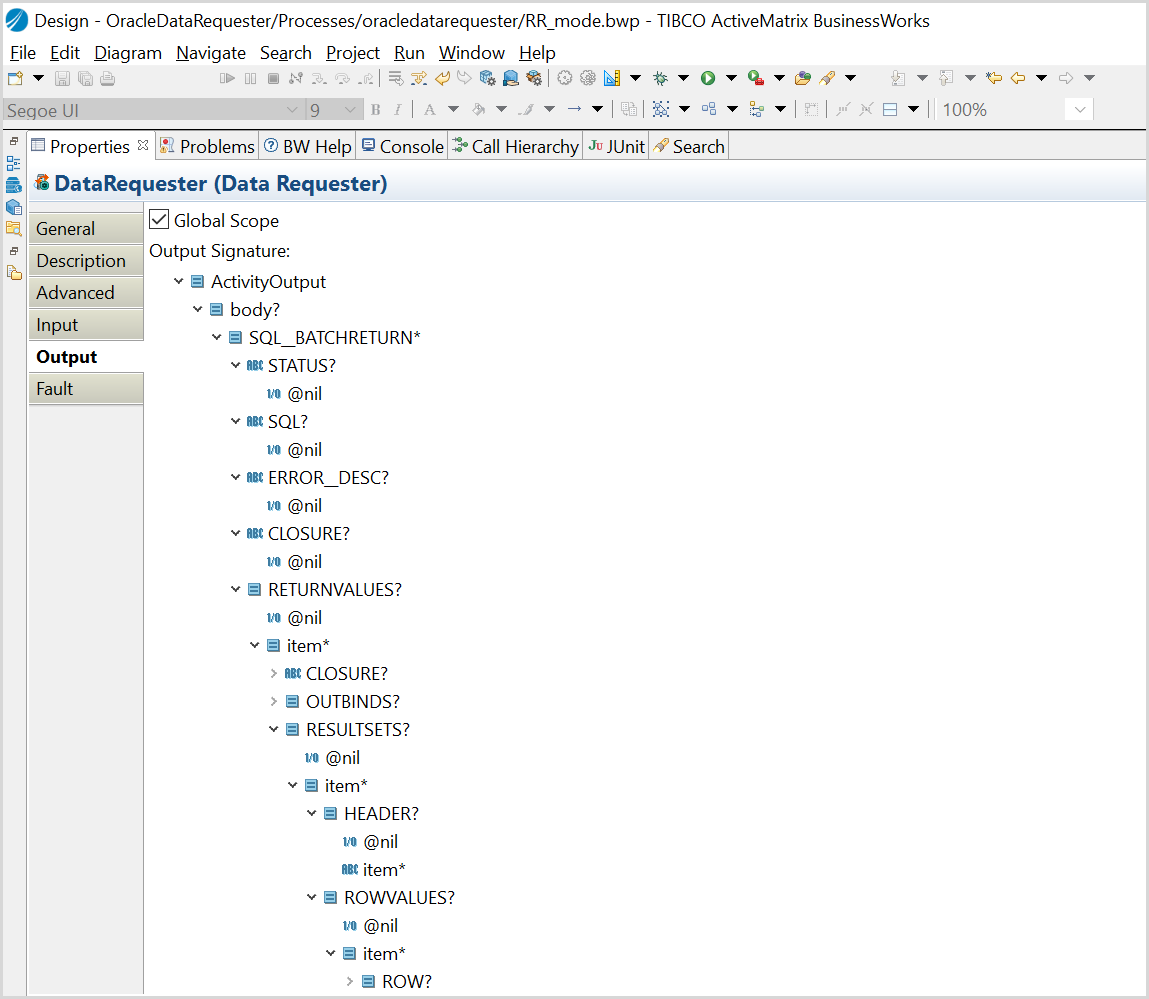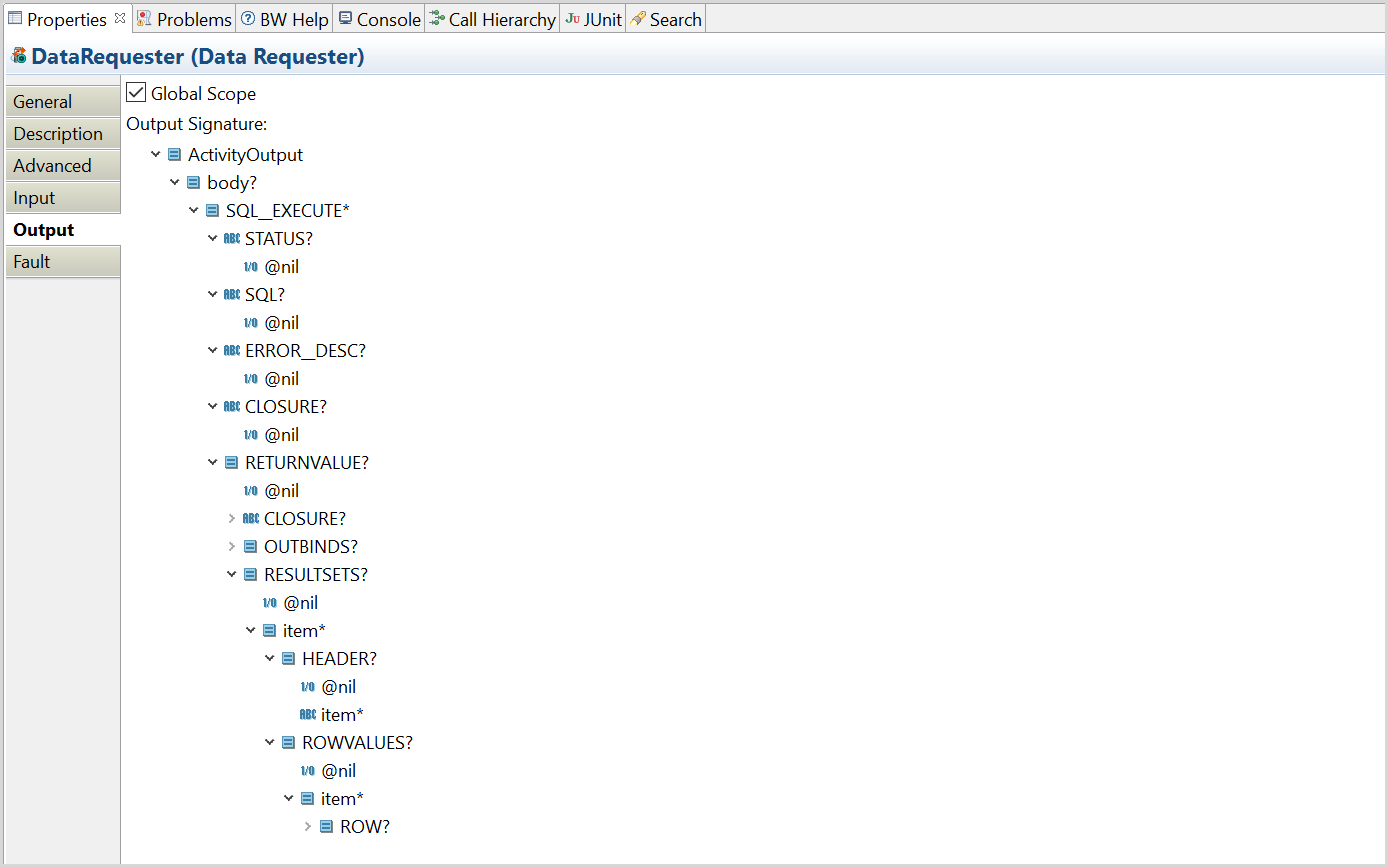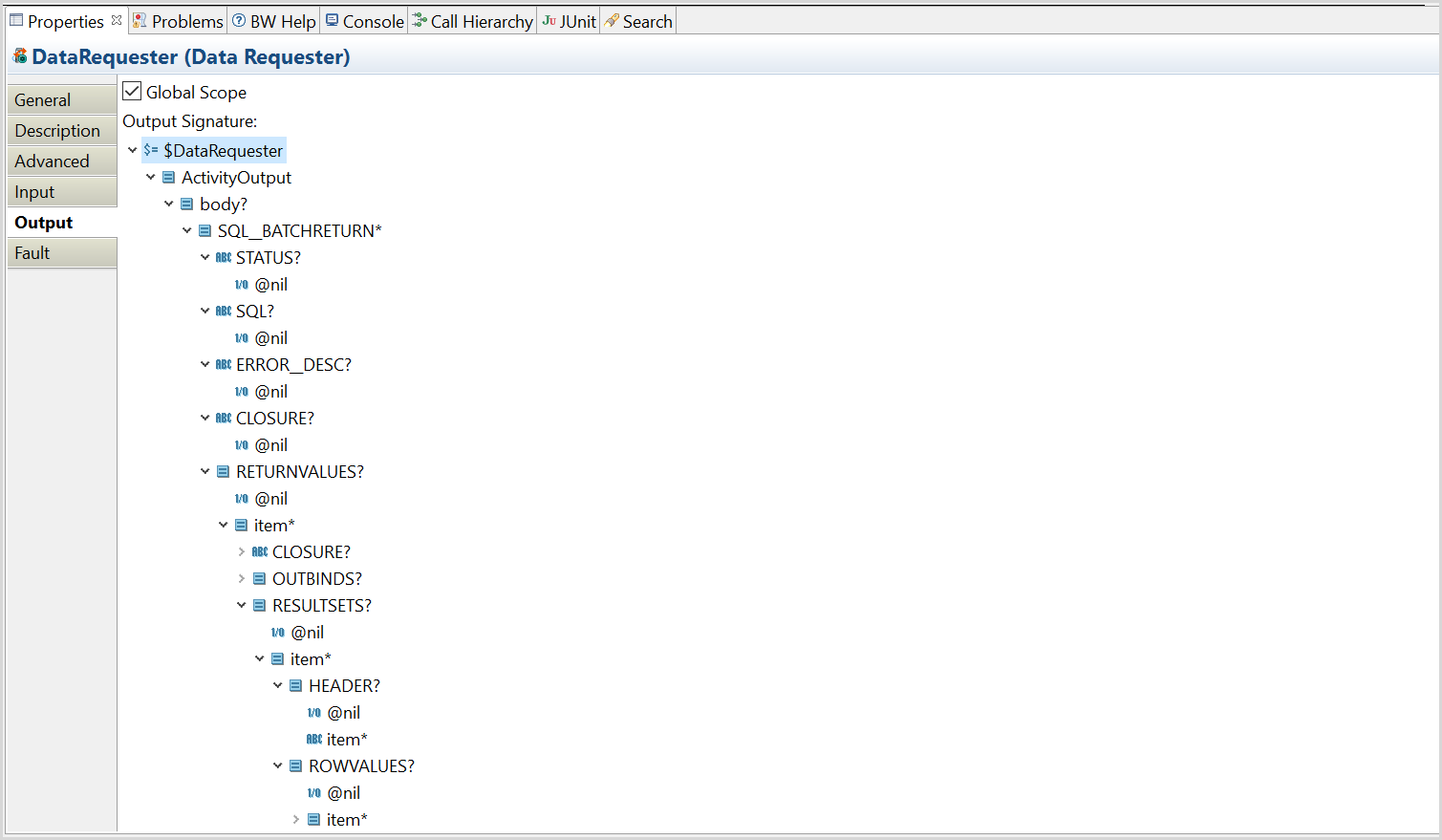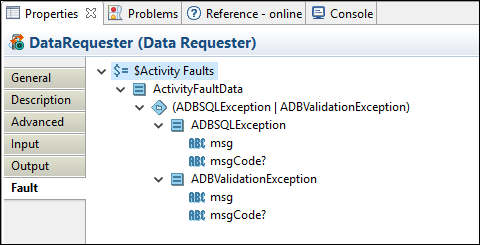Data Requester Activity
The Data Requester activity allows an application to submit one or more SQL statements, stored procedures, and functions to be processed. The plug-in processes the request and returns the results as a reply.
General
The General tab contains the following fields:
The RPC custom operations schema is used when you want to integrate with third-party applications to describe the actual input and output values of a database operation or a stored procedure. You can use the RPC custom operation mode to define your operations and specify the stored procedures to be run at design time.
Advanced
This tab has the following fields:
| Field | Literal Value/Process Property/Module Property? | Description |
|---|---|---|
| Operation Options | ||
| Timeout (sec) | Yes | Select the timeout period to be used.
Default: 180 seconds |
| Maximum Rows | Yes | Specifies the maximum number of rows to be fetched. This can be used to limit the memory usage of the plug-in. The unfetched rows are ignored by the plug-in.
At run time, the plug-in fetches the number of rows according to the value set in the operation level instead of the service level. |
| Statement Cache | Yes | The number of cache statements for a generic RPC request/reply service.
The size of the cache depends on the number of unique statements provided as input. |
| Date And Time Pattern Options | ||
| Date | Yes | Enter the date in the yyyy-MM-dd format. |
| Time | Yes | Enter the time in the HH:mm:ss format. |
| Timestamp | Yes |
Enter the timestamp in the yyyy-MM-dd HH:mm:ss.S format, where S is milliseconds. |
Input Schema Description
| Field | Description |
|---|---|
| MAXROWS | The maximum number of rows to retrieve. |
| SQL | The SQL string used to specify the SQL statement to be executed. This string is automatically generated by the palette. |
| CACHE | True if users want the agent to cache the statement for performance optimization. |
| PACKAGE | Read only. Uses the call operation form to modify the package of the stored procedure. |
| SCHEMA | Read only. Uses the call operation form to modify the schema of the stored procedure. |
| INBINDS | Input parameters of the stored procedure. |
This tab displays the output schema.
For more information about how different data types are mapped to the XSD type, see Output Mapping.
| Field | Description |
|---|---|
| STATUS | SUCCESS if the stored procedure or SQL statement is executed successfully.
FAILURE if an error occurs. Error details are stored in the ERROR_DESC field. |
| SQL | The SQL string used to specify the SQL statement to be executed. |
| ERROR_DESC | In case if the status is FAILURE, error description is stored here. |
| CLOSURE | Closure argument obtained from the request. |
| OUTBINDS | The output parameters of the stored procedure. |
| RESULTSETS | The result set(s) returned by the stored procedure or SQL statement. |
Fault
The Fault tab lists exceptions that are thrown by this activity:
| Error Schema Element | Data Type | Description |
|---|---|---|
| ADBSQLException | String |
It has a msg and msgCode field for the exception. |
| ADBValidationException | String |
It has a msg and msgCode field for the exception. |
| msg | String | The error message returned by the plug-in. |
| msgCode | String | The error code returned by the plug-in. |



